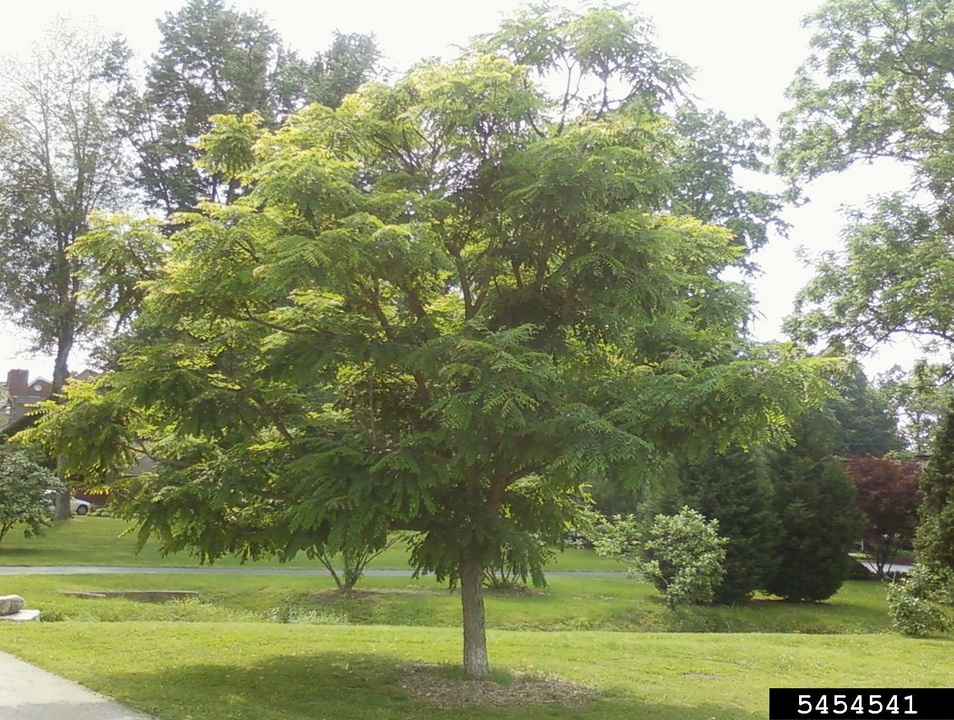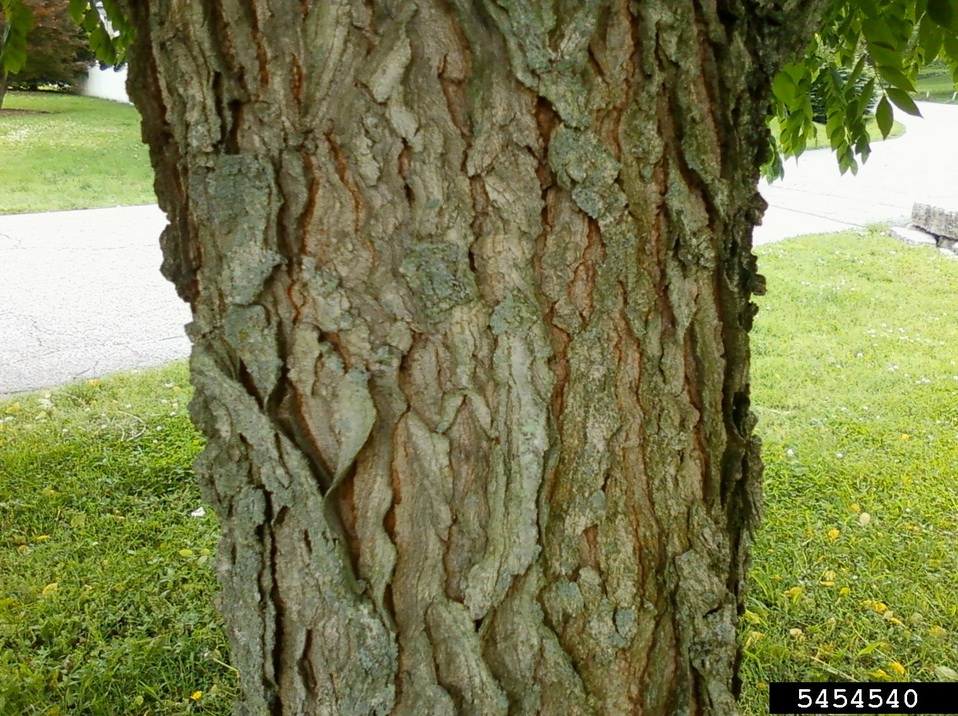In December, our winter environment can start to look quite drab. However, there are plants that we can add to our landscapes to help improve that. Not all of the plants for winter are those with evergreen needles or unique seedheads that last through the cold weather, some have interesting bark. Kentucky Coffeetree is one that will add an interesting touch to an otherwise unexciting winter landscape.
Kentucky Coffeetree, Gymnocladus dioicus, is a large, native tree that grows up to 75 feet tall and 40-50 feet wide. This tree has leaves that are bipinnately compound, meaning that they are twice compound on each leaf, each leaflet is 1.5-3 inches long. The bark adds a great deal of interest to winter landscapes, it is “characteristically roughened with tortuous, recurved, scale-like ridges which are distinct even upon comparatively young branches” according to Michael Dirr from the Manual of Woody Landscape Plants. The seeds are held in a large, leathery, dark brown pod that is 5-10 inches long and is held onto the tree through the winter months.
The straight species of Kentucky Coffeetree is most common choice for this particular tree. However, sometimes this is a choice for a street tree or other areas where the seed pods are not desired. There are a couple of choices for male trees that do not produce seeds and therefore do not drop the pods on the sidewalk or street. These varieties include ‘Espresso’ and ‘J.C. McDaniels’.
Kentucky coffeetree is most often used as a focal point in your landscape, for all seasons. It also makes a great shade tree. It can be grown in most any landscape setting and is adaptable to many soils and growing conditions. It is a great tree for most locations, including within the city, because it can tolerate urban soils. Kentucky coffeetree is a great choice for Nebraska because it tolerates drought conditions, so it will do well in the dry summer conditions we face.
Kentucky coffeetree can be used for many things. According to the USDA NRCS, Kentucky coffeetree wood is strong and heavy and therefore is used for cabinets, fine furniture, railway sleepers, bridge timbers, and fence posts. According to Michael Dirr, early settlers used the beans as a coffee substitute. The USDA NRCS states that Native Americans used the pulp as a remedy for headaches and fever and the leaves were used to make a tea. However, the research is mixed on whether or not the parts of this tree are poisonous to eat. Many researchers state that the seeds and pods contain cytisine which can be harmful if eaten, but Indiana State University cannot find the presence of cytisine in their research, according to the USDA NRCS. Settlers and Native Americans were able to ingest parts of this tree because after the parts have been cooked they may be safe for consumption. For safety, it is best to not eat any parts of this tree.
Kentucky coffeetree is a great tree. It has beautiful leaves for the spring and summer and the bark and seedpods bring a great deal of interest to any winter landscape. They are adaptable to most any growing conditions which makes them suitable for use in the city or on an acreage. So the next time you are looking for a tree, choose Kentucky coffeetree, a native tree for Nebraska.


